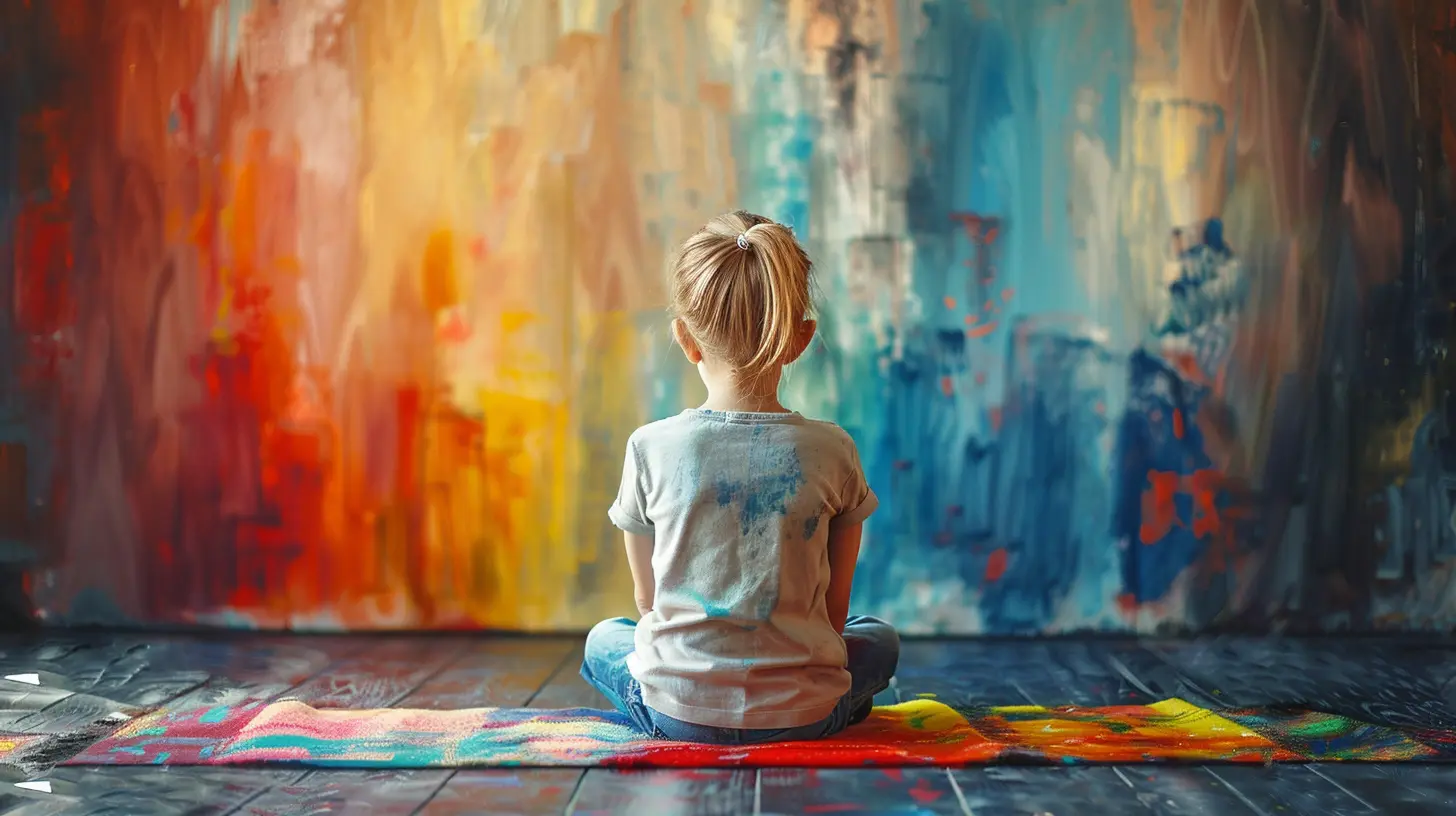The Connection Between Free Time and Creative Thought
25 June 2025
Have you ever noticed how your best ideas seem to pop into your head when you're not even trying? Maybe it’s in the shower, on a walk, or while staring at the clouds. That’s not just coincidence — it’s the magic of free time working its creative charm.
As parents, we’re often juggling a million things. We’re knee-deep in laundry, school runs, dinner prep, and bedtime stories. Free time? What even is that? But here’s the deal — carving out even a little unstructured time isn’t just good for you, it’s incredibly powerful for your kids, too. Especially when it comes to boosting creativity.
Let’s dive into how and why free time and creative thought are so deeply connected — and why that matters more than ever, especially in today’s overscheduled world.
What Exactly Is “Free Time”?
Before we go deeper, let's get one thing straight: free time doesn't mean wasting time.Free time is any unscheduled, unstructured moment when you're not following instructions, meeting deadlines, or ticking off to-dos. It’s time when your mind can roam freely — you’re not consumed by tasks or goals. And for kids? It’s playtime that’s not dictated by a screen, school, or even well-meaning enrichment activities.
It’s those quiet moments where imagination is free to take the wheel.
The Brain on Free Time
Now, let’s get a little brainy — but not too much!When you’re on auto-pilot, like folding laundry or washing dishes, your brain taps into something called the "default mode network" (DMN). It's a fancy name for the system that gets lit up in your brain when you’re not focused on the outside world.
Here’s the cool part: when the DMN kicks in, your brain starts pulling together ideas, memories, and connections that it usually keeps separate. That’s where creativity sparks.
In other words — in the silence and boredom of free time, your brain gets loud with new thoughts.
Why Creativity Matters (Now More Than Ever)
Creativity isn’t just about painting or writing stories. It’s about problem-solving, thinking outside the box, and adapting to change. All things our kids (and, let’s be honest, us parents too) need in this fast-paced world.Creativity helps children:
- Build resilience
- Express emotions in a healthy way
- Develop critical thinking skills
- Feel confident in their ideas
And do you know what fuels all that beautiful creativity? Yup. Free time.
Overscheduling: The Creativity Killer
Let’s be real — we're all guilty of trying to give our kids the best.Soccer practice, piano lessons, coding camp — all awesome, no doubt. But when every second is packed, there's no room to breathe, let alone imagine.
Children need time to be bored. Yep, I said it. Boredom is the secret sauce! It’s in the stillness of “I don’t know what to do” that they start figuring out what they actually WANT to do.
Too many scheduled activities? That’s like watering a plant continuously without giving it time to absorb. The roots can’t grow deeper.
How Free Time Ignites Creative Thought
So how does free time actually help creativity flourish? Here’s the lowdown:1. It Sparks Imagination
When there’s nothing to “do,” the mind starts creating its own worlds. A sheet becomes a superhero cape. A cardboard box? A spaceship. That’s not just play — that’s innovation in disguise.2. It Strengthens Problem-Solving
With no pre-set instructions, kids (and adults!) have to make decisions, make mistakes, and try again. That’s golden for brain development and creative thinking.3. It Encourages Deep Focus
When a child is immersed in their own play or hobby, they enter a flow state — a kind of deep engagement where time seems to fly. That’s where some of the most creative breakthroughs happen.4. It Reduces Mental Clutter
Let’s face it. Our brains are overloaded. Free time clears out the noise. It's like hitting the refresh button — letting the dust settle so new ideas can shine through.Real Talk: Why Parents Avoid Free Time
Okay, so why aren’t we all doing this already?Here are a few reasons parents steer clear of unstructured time (it’s okay, I’ve been there too):
- Guilt: We worry we’re not “doing enough.”
- Fear of boredom: We think our kids will complain or get into trouble.
- Social pressure: Everyone else's child is taking Mandarin and fencing. Shouldn't mine?
But here’s the truth — giving your child unstructured time is one of the best things you can do for their growth.
How to Create More Free Time (Without Chaos)
You don’t need to overhaul your life. Even 15 minutes here and there makes a difference. Here are a few simple ways to build in more free time (and boost creativity):1. Schedule “Nothing Time”
Sounds weird, right? But if it’s not on the calendar, it won’t happen. Block out time where there are no tasks, no screens, no expectations.2. Limit Screens (Gently)
Not all screen time is bad, but too much can squash creativity. Try setting boundaries — like no screens during certain hours — and offer alternative activities.3. Encourage Open-Ended Play
Stock your home with simple toys and materials — blocks, art supplies, nature items, dress-up clothes. The best tools for creativity are often the simplest.4. Lead By Example
Show your kids how you spend your own free time. Curl up with a book, doodle, bake something new, or just daydream. Your example will speak louder than words.5. Embrace the B-Word: Boredom
When your child says, “I’m bored,” resist the urge to fix it. Let them sit in that discomfort. Often, that’s the doorway to something amazing.Free Time Isn’t Lazy — It’s Essential
We live in a society that prizes productivity. But creativity doesn’t thrive in the hustle — it blooms in the quiet.Think of your brain like a garden. Constant planting and watering won’t help if there’s no sunlight or space to grow. Free time? That’s the sunlight. That’s where new ideas take root.
So let’s stop feeling guilty about giving our kids (and ourselves) time to just be. Because in that space — in the quiet cracks of the day — that’s where the magic happens.
The Science Says So
Still looking for proof? Studies show that unstructured time leads to greater creativity and emotional well-being. One study from the University of California found that people were more creative after taking breaks and letting their minds wander.Another study published in “Psychology of Aesthetics, Creativity, and the Arts” found that daydreaming boosts problem-solving and idea generation.
Basically, your brain is begging for a break.
Free Time as Family Time
Here’s the bonus: free time doesn’t have to be alone time. It can also be the perfect opportunity to connect as a family without agendas.- Build a fort together.
- Take a spontaneous nature walk.
- Lie on the grass and make up stories about clouds.
These are the moments your child will remember. Not the race to soccer practice. Not the third math worksheet. But the laughter, the silliness, the messy, beautiful freedom.
Wrapping It All Up
The connection between free time and creative thought is real — and incredibly powerful. In a world that celebrates busy-ness, let’s be bold enough to slow down.Give yourself and your child the gift of boredom. Let their minds wander. Make space for silence, silliness, and spontaneity. That’s where imagination lives. That’s where problem-solving grows wings. That’s where creative thought dances its brightest.
Because in the end, it’s not about filling every second — it’s about creating space for what really matters to come to life.
all images in this post were generated using AI tools
Category:
Encouraging CreativityAuthor:

Noah Sawyer
Discussion
rate this article
2 comments
Aubrey McQuillan
What interesting insights! How can we best encourage creativity during our kids' free time?
October 26, 2025 at 3:58 PM

Noah Sawyer
Thank you! To encourage creativity during kids' free time, provide open-ended activities, limit screen time, and create a supportive environment where exploration and experimentation are encouraged.
Noemi Becker
Free time plays a crucial role in fostering creative thought in children. Unstructured play allows them to explore their interests, develop problem-solving skills, and engage in imaginative play. Encouraging kids to spend time away from screens and schedules promotes mental flexibility, innovation, and a lifelong love for learning.
July 7, 2025 at 3:13 PM

Noah Sawyer
Thank you for highlighting the importance of unstructured play! I completely agree that free time fosters creativity, problem-solving skills, and a love for learning in children.


